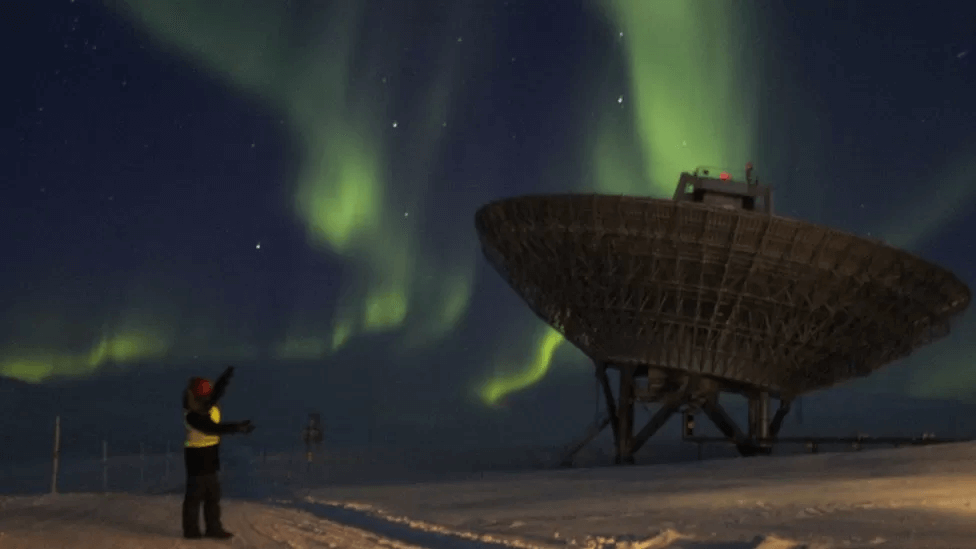129. EISCAT – studying the ionosphere and the Solar Wind
Prof Eleri Pryse, Dr Rosie Johnson

The European Incoherent SCATter (EISCAT) radar system was first suggested in 1969 and physicists at Aberystwyth were involved for over 50 years.
Sir Granville Beynon FRS (1914 – 1996), with his expertise of studying the ionosphere with Skylark sounding rockets and Professor Phil Williams (1939 – 2003), with his expertise in radio astronomy were key to the UK joining the EISCAT project, with Prof Williams being seconded as EISCAT’s Associate Director of Science from 1980 to 1982.
EISCAT operates at very high frequencies and is used to measure the density, temperature and velocity of ions and electrons in the ionosphere at altitudes of 100km to 600km and is essential for understanding the propagation of radio waves for our telecommunications and GPS systems.
Prof Williams further utilised EISCAT to study scintillation signals from quasi-stellar radio signals to study the Solar Wind, the Aurora Borealis (Northern Lights) and the protection given by the Earth’s magnetic field.
Professor Eleri Pryse utilised satellite passes to study scintillations and electron density. Aberystwyth University is currently involved in the EISCAT_3D: Fine-scale structuring, scintillation, and electrodynamics (FINESSE) project. Many other Aberystwyth physicists, e.g. Dr Andy Breen (1964 - 2011) and Professor Leonard Kersley, have been involved over the years.
Further Information
Prof Eleri Pryse
Dr Rosie Johnson
